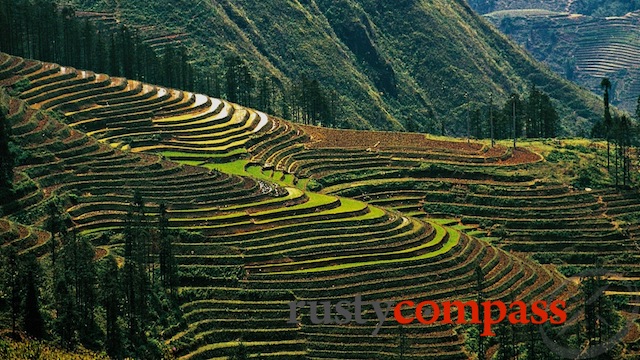
Photo: Mark BowyerSapa, Vietnam
But change is coming to Sapa's once quaint, quiet old town too quickly. Multi-coloured hotels soar ever higher to capture the best views of the surrounding mountains with no regard for impact on the neighbours or the visual quality of the town.
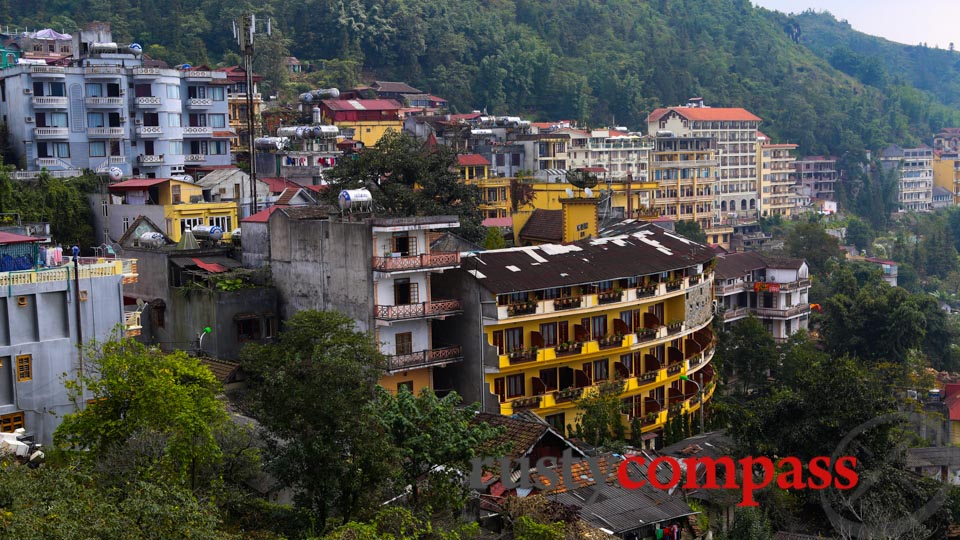
Photo: Mark BowyerSapa's shambolic hotel development looks benign from here.
Only a few traces of French colonial architecture from Sapa's founding as a hill station retreat 100 years ago remain. Most was destroyed in twentieth century battles. And what war didn't destroy, tourism development during the past decade mostly has.
There are other big changes at work too. The tourism dollar has driven a large influx of Vietnamese migrants from nearby northern provinces into what remains a majority ethnic-Hmong region. And few of the tourism spoils trickle down to the ethnic minorities whose cultures are a big part of the area's appeal.
Walks
While the pressures of tourism development may be taking their toll on Sapa town, the surrounding countryside is as spectacular as ever. It's the real reason to visit this part of the world. And if you're prepared to walk, you can still have plenty of great experiences.
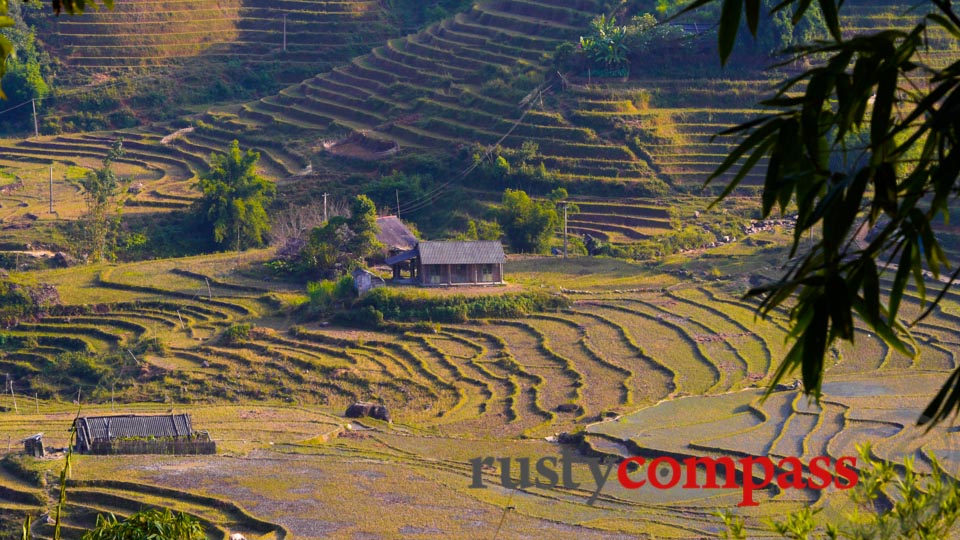
Photo: Mark BowyerSapa's rice terraces.
I spent a couple of afternoons walking to villages around Sapa and found them pretty quiet, and free of travellers - even during peak season. The very act of walking puts you out of sync with tourist buses and also gives you a reach that bus bound travellers don't have.
Time your walks for the early morning and late afternoon and you'll be even less likely to collide with other travellers. Walking is every bit as spectacular and enjoyable as it was fifteen years ago. Perhaps more so. While Sapa's tourism dividend may be divided very unevenly, in the mid nineties, dire poverty, coughing, sickly children and mangy dogs were the most striking features of an Hmong or Red Dzao village visit. Village life may still be basic, but access to food, healthcare and education has come a long way. No doubt there's still a long way to go.
Restaurants
One highlight of my recent visit was the opening of Hillstation Signature Restaurant by two young Danes, celebrating Sapa's ethnic-minority cuisine. The food is delicious, the setting is a nice mix of Danish design minimalism with some local touches and most of the staff hail from local minority tribes.
You can read more about Sapa restaurants here.
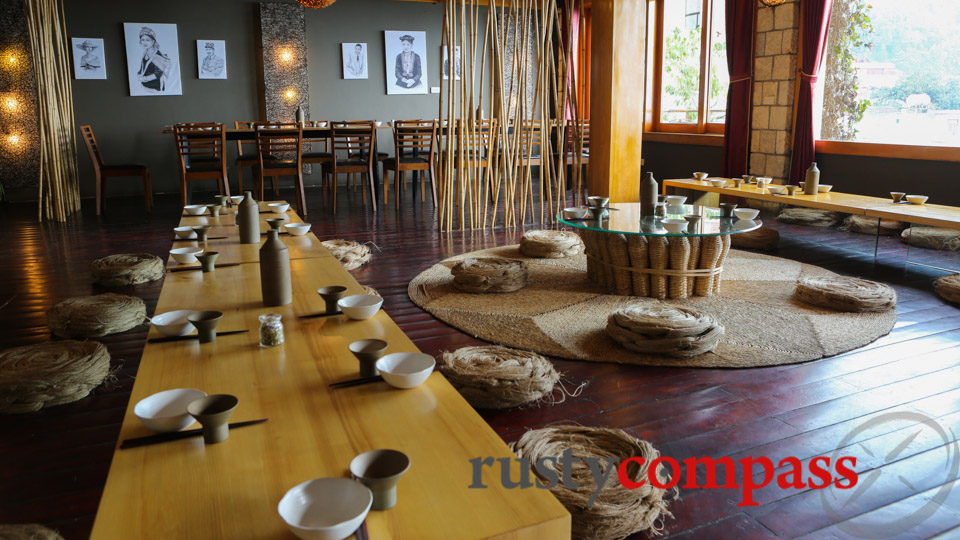
Photo: Mark BowyerHillstation Signature Restaurant, Sapa

Photo: Mark BowyerSoren Pindstrup - One of 2 Danes behind Sapa Hillstation restaurant.

Photo: Mark BowyerThe team in the kitchen at Sapa Hillstation Signature Restaurant
Topas Ecolodge
Topas Ecolodge has been open for a few years now but I visited for the first time during my recent stay in Sapa.
The concept is stripped-back luxury in a spectacular mountain setting. Despite the name, I couldn't locate any particular eco-attributes apart from the setting and the absence of room features like TVs, phones and wifi internet. I did not note any action on the renewable energy front - which should by now be a basic criteria for making eco claims?
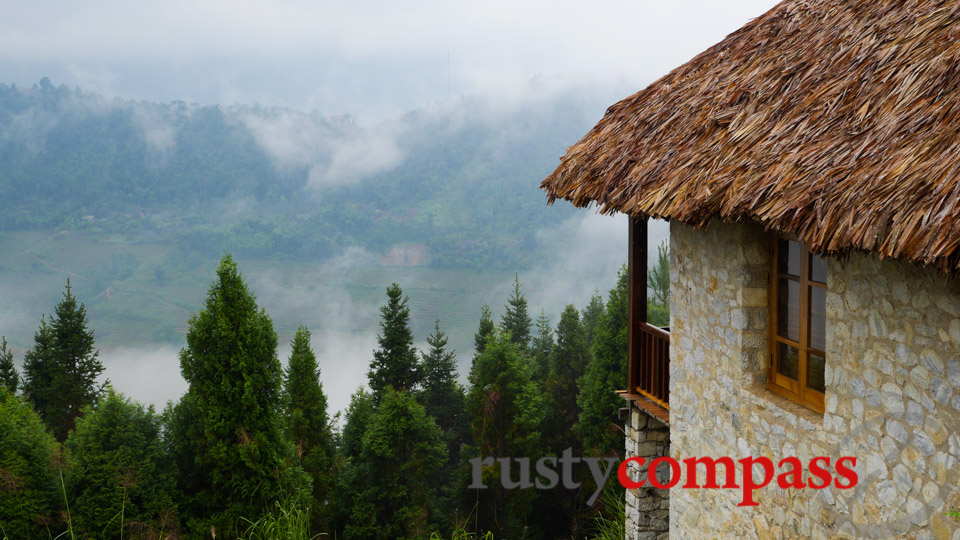
Photo: Mark BowyerTopas Ecolodge, Sapa
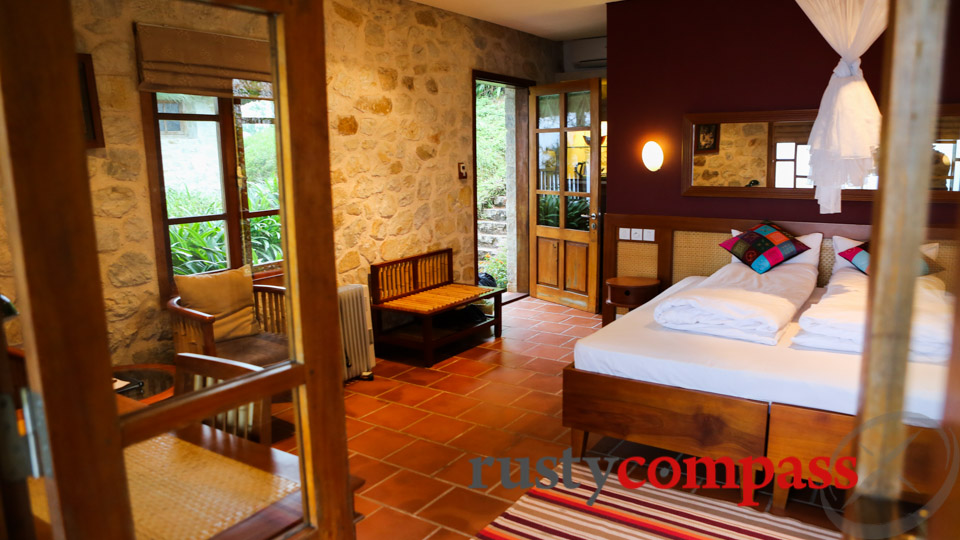
Photo: Mark BowyerTopas Ecolodge, Sapa
Topas Ecolodge is great for travellers wanting to immerse themselves in walks and treks in remote country. The bungalows also have amazing views. Facebook's Mark Zuckerberg chose the ecolodge for his Christmas vacation in 2011.
You can check out my review of Topas Ecolodge here.
Cable car coming to Fansipan
Ominous heavy tourism hands are starting to reach beyond Sapa town now. The big news this month, is that work has commenced on a cable car to Vietnam's highest mountain peak, Fansipan. Vietnam's provincial governments have been seduced by the idea that the cable car is the quintessential tourism drawcard.
Right across the country, It seems no pristine scene should stay untouched if it can be improved with some metal pylons, heavy iron cables and brightly coloured dangling cars. Sapa will soon join Dalat, Nha Trang, Danang and Vung Tau in Vietnam's cable car club. The toll on the natural setting will be especially heavy in Sapa.
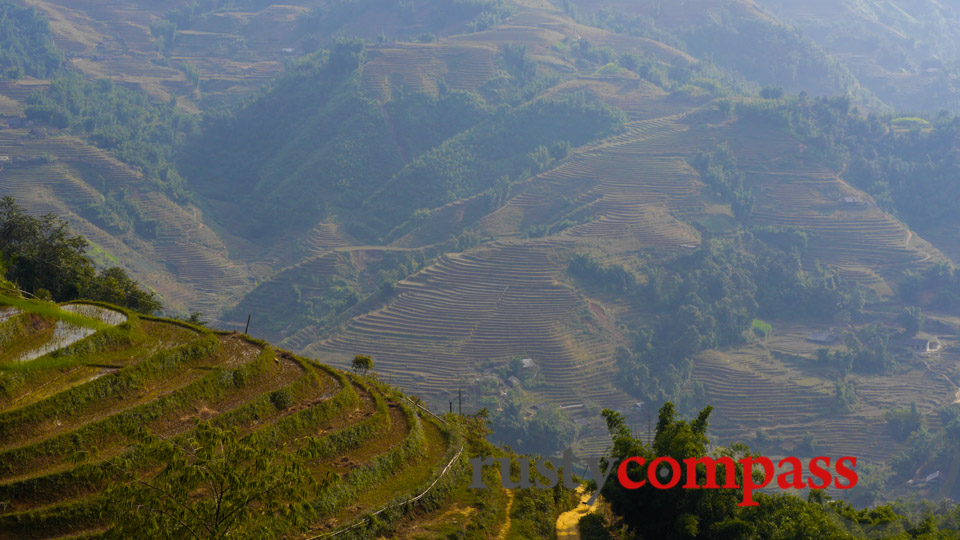
Photo: Mark BowyerSapa's rice terraces. Cable car coming soon!
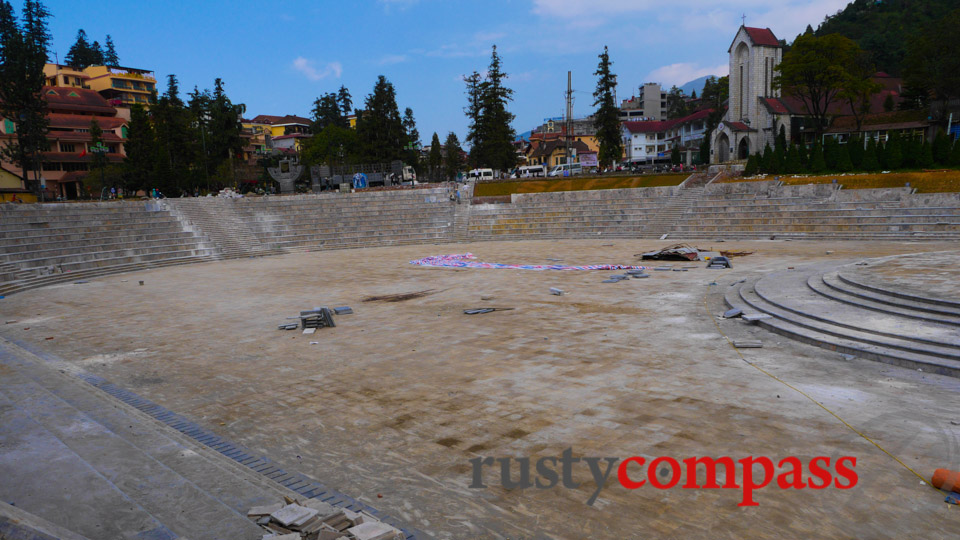
Photo: Mark BowyerSapa's new town square. Vietnamese provincial officials have a depressing infatuation with concrete.
One of the most pleasing things about Vietnam's far north has been that remoteness has protected it from overdevelopment and some of the less pleasant excesses of mass tourism.
Over the past decade, a hardy set of travellers, including lots of young Vietnamese, have made conquering the country's tallest mountain a popular challenge. The romance of the two-day climb will likely be lost when less energetic cable car travellers can make the journey in a few minutes.
But that's not all that's changing in Sapa. The town is celebrating 100 years of tourism this year and seems determined to make the anniversary a showcase of the collision when heavy handed tourism development meets beautiful mountain country and fragile indigenous cultures.
Changes at Sapa market
Sapa's colourful central market, long a favourite spot for travellers and locals, is set for major changes as a new market opens several kilometres from the town centre. The local Hmong, who have long been marginalised in the market (and elsewhere) by Vietnamese stall-holders, look set to be the losers.
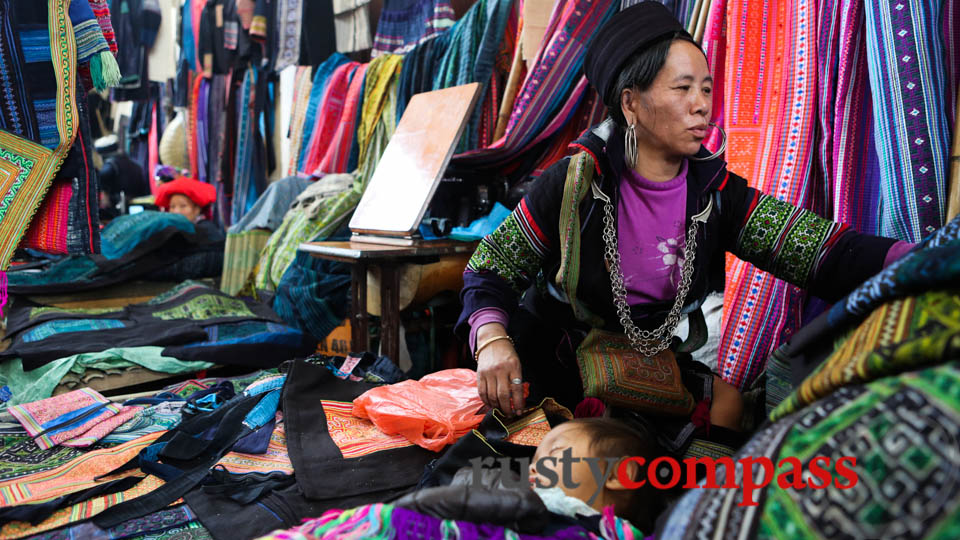
Photo: Mark BowyerThe Hmong pavilion in Sapa's old market - now under a cloud.
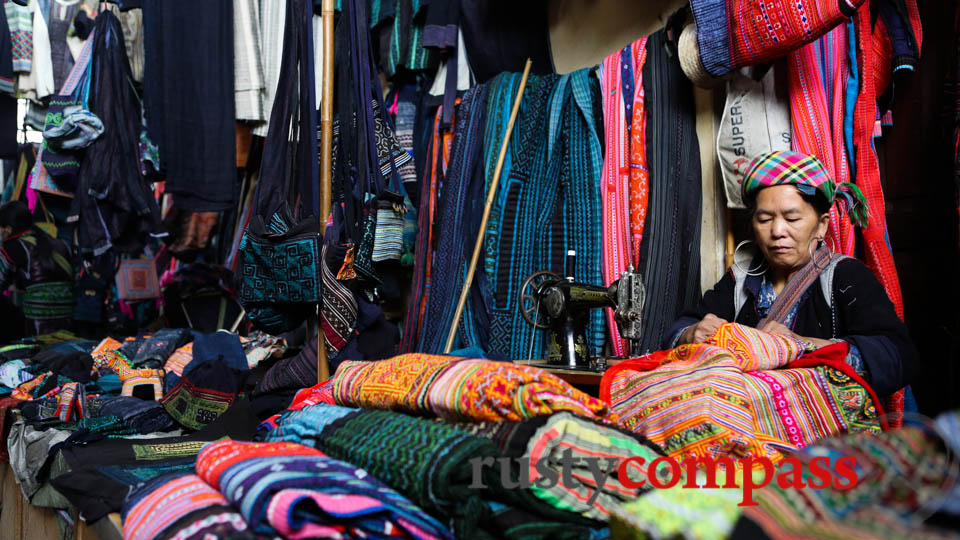
Photo: Mark BowyerThe Hmong pavilion in Sapa's old market - now under a cloud.
While Hmong embroidery, jewellery and other souvenirs are a major attraction for tourists, the trade is now dominated by non-Hmong sellers. Authentic Hmong wares are increasingly being replaced by cheap imports from nearby China too.
If you're visiting Sapa market, make a point of visiting the pavilion that's been allocated to Hmong stallholders - while it lasts. Try and support them by buying from there as well.
Sapa Hotels
Sapa will soon have a new international hotel in the heart of town. That's not a bad thing and at this stage, it doesn't look too bad either. In one of those curious features of Vietnam's communist - capitalist economy, the hotel is being developed by the state oil company.
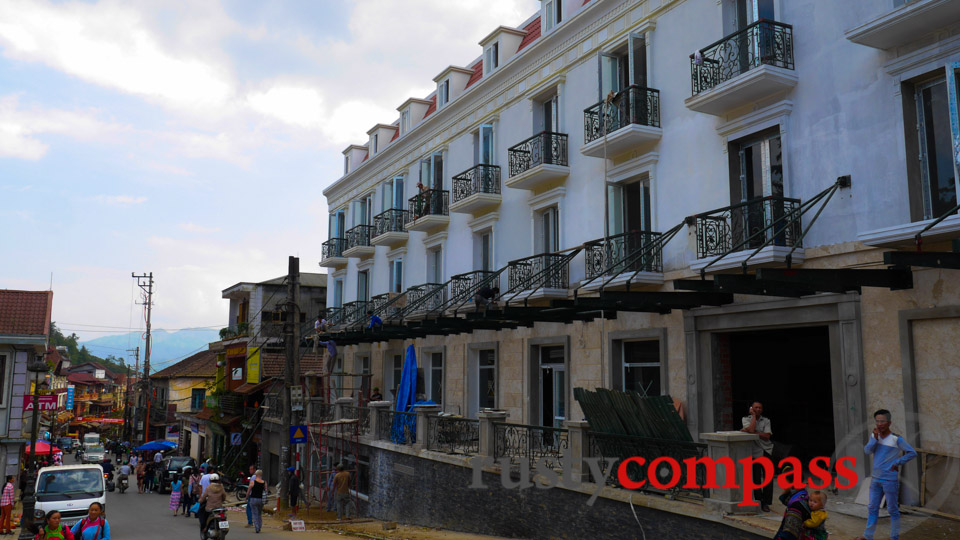
Photo: Mark BowyerA new hotel will open later this year in Sapa.
Let's wait and see what kind of job a state oil company can make of a hotel in a hill station town.
For more on Sapa, check out the Rusty Compass Sapa travel guide here.
Disclosure
I stayed as a guest of Topas Ecolodge for a night during my recent visit to Sapa. The hotel did not request nor does Rusty Compass allow for, any editorial interference in reviews or blog pieces by hotels or other suppliers except in matters of fact and accuracy.

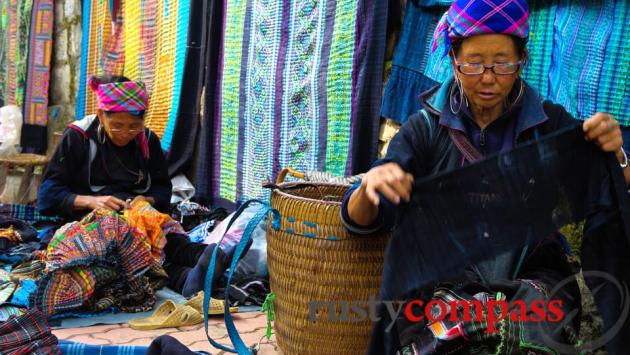



1 comment so far
I am planning trip to Sapa, need to know how much do I need for a week and what are the best places to visit. Also is there any online hotel booking site like ( http://bit.ly/1JFG4Le ) from where I can get the trip planned?